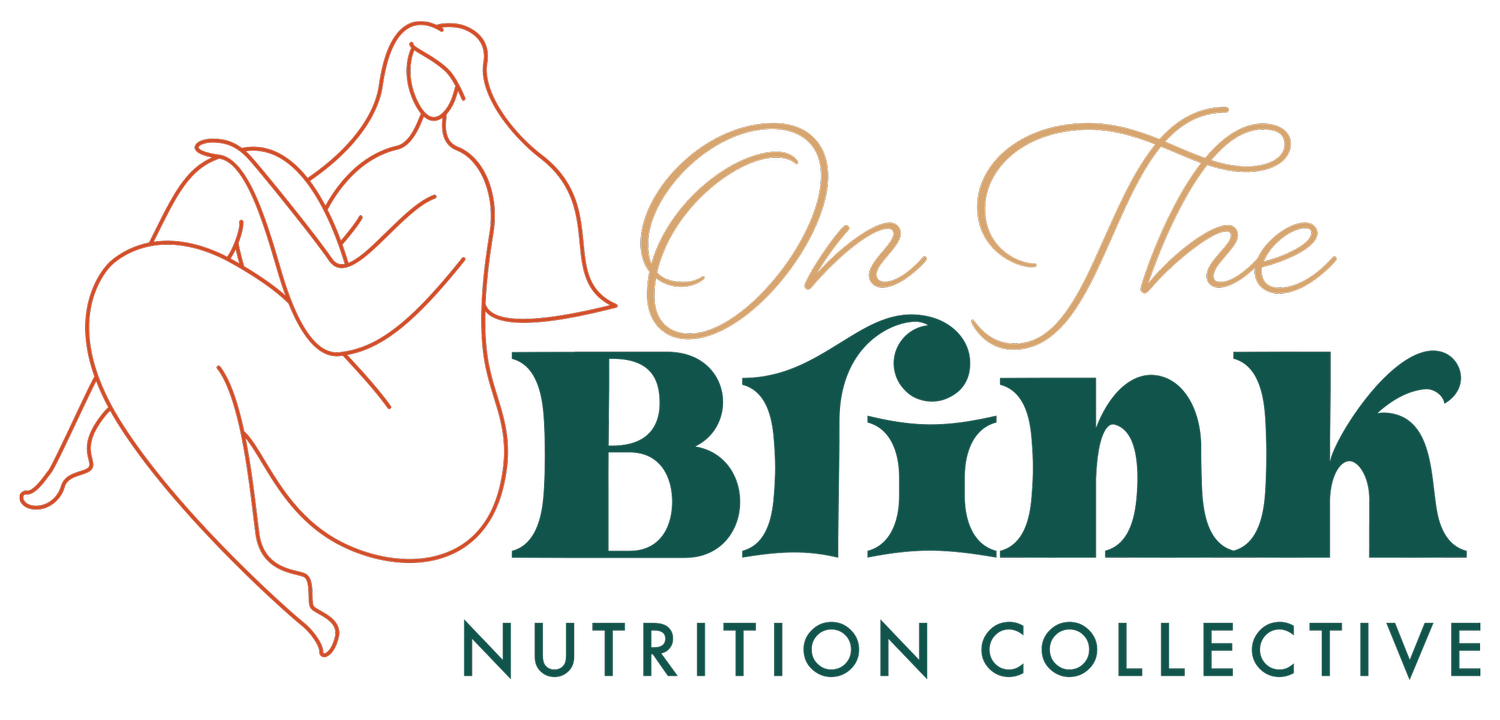Cold Cereal: Not Poison. Just Food.
One of the most frequently asked questions in our client sessions this summer has been:
“Isn’t breakfast cereal basically poison because of all the additives, preservatives, and sugar?”
While not all cold cereals are created equally, the Registered Dietitians at On the Brink Nutrition Collective are here to challenge the idea that cold cereal is an immediate threat to one’s health.
To be considered poison, a substance must be capable of causing illness or death when introduced or absorbed into the body.
Can cold cereal make a person ill or contribute to a decline in health? Yes, but only in certain cases:
If someone is allergic to an ingredient in the cereal, leading to a life-threatening immune reaction.
If the product contains bacteria, mold, or another organism that causes food-borne illness.
In the case of someone with diabetes, if they forget to take the necessary medication to manage the glucose from the carbohydrates in cereal.
But let’s be clear: no one has ever died from eating too much Cap’n Crunch. Sure, it might leave your mouth a bit scraped up, but those minor abrasions usually heal by the next day’s breakfast.
In our practice, we always strive to tell a bigger story.
We’ve noticed that fear and disdain of cold cereal (and other foods labeled as “toxic,” “poisonous,” or “addictive” by diet culture or the broader medical community) doesn’t come out of nowhere. No one is born afraid of cereal.
Here are some reasons why cereal can be so scary, along with the motivations behind these fears and how the RDs at On the Brink Nutrition Collective help address and resolve them:
Reason 1: “I don’t like the craving and urgency I feel around cold cereal. I feel out of control.”
Motivation: A desire to feel relaxed and clear-minded at mealtime. A wish to eat in a way that diet culture defines as “good” and “healthy.”
Intervention: Eat a variety of foods (including carbs from grains) regularly to minimize deprivation-based eating. Examine food rules and beliefs—what system informs these? Fact-check them.
Reason 2: “I don’t like my (or my kids’) body size/shape/weight, so I must be doing something wrong with our diet.”
Motivation: To protect and gain safety, belonging, and dignity by adhering to the dominant definitions of health, weight, and beauty.
Intervention: Recognize the impact of weight stigma and internalized fatphobia. Divest from diet culture. Learn about size diversity and natural body changes during growth and development, like puberty and menopause.
Reason 3: “I’m afraid of developing a chronic illness or contributing to illness in my children.”
Motivation: To maintain health and ability (to not be seen as a “burden”)
Intervention: Grieve the lack of access to affordable healthcare. Learn about social determinants of health. Understand the body’s natural and effective filtration system (like the liver and kidneys). Learn about the body’s need for carbohydrates and how we digest, absorb, and metabolize them.
Reason 4: “I’m afraid of being criticized by others about how I (or my kids) eat.”
Motivation: To protect and gain safety, happiness, belonging, and dignity.
Intervention: Acknowledge the impact of criticism. Practice self-compassion. Set boundaries with those who critique you. Surround yourself with people who don’t condition your worthiness on how you eat. Celebrate the pleasure in food and practice gratitude for the ability to enjoy it.
Listen.
The act of eating is a multi-step process.
There are many decisions involved: what to eat, how to get to the grocery store, where to find the money to purchase the food, how to prepare it, where to store leftovers, and whose turn it is to clean up.
The idea that certain foods (often the most affordable, shelf-stable, and easy-to-prepare…those labeled “processed”) can significantly damage the human body only serves to increase fear and unnecessarily complicate mealtime. Fear does not breed sustainable behavior change.
When it comes to cold cereal, there’s no need to avoid it. It’s a wonderful source of energy, fortified with vitamins and minerals. It’s delicious and easy to use/prepare.
At On the Brink Nutrition Collective, we want to help you find liberation from restrictive diet advice that makes you feel unsafe in your own body and unsatisfied at the end of mealtime. You don’t have to live in a world of fear where every meal is a cause for anxiety.
Cold cereal can be part of an eating style that is enjoyable, time-saving, balanced, sensory-friendly, and cost-effective.
Need more support to untangle from food rules and find more confidence and pleasure in eating? Reach out. We’d love to support you.
Here’s a little bonus for you:
Breakfast Cereal is delicious on its own, but if you're looking to jazz it up, here are some tasty ideas:
Nuts & Seeds: Add some crunch and long-lasting energy with walnuts, pecans, almonds, or seeds like hemp, chia, flax, sunflower, and pumpkin. The healthy fats and protein will help keep you full longer.
Fruits: Fresh slices of bananas, chopped apples or pears, strawberries, blueberries, or cherries, as well as dried fruits like cranberries or apricots, bring in more flavor and fiber.
Mix It Up: Create a unique cereal blend by combining your favorites into a fun mashup.
Peanut Butter: Stir in some peanut butter or peanut butter powder into milk (or a plant-based alternative) and warm it over medium heat before pouring it over your cereal.
Yogurt or Kefir: For extra creaminess and a boost of probiotics, try adding yogurt or kefir.
Enjoy experimenting with these ideas to make your breakfast cereal even more satisfying!

